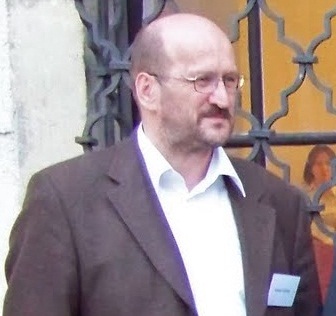Klaus SACHS-HOMBACH
 Epistemic Functions of Pictures
Epistemic Functions of Pictures Some Conceptual Preliminaries
It is widely indisputable that images, beyond their much praised knowledge-imparting (didactic) functions, can also perform knowledge-promoting (epistemic) functions. An epistemic function in the narrower sense does, regarding images, essentially occur in three variants: Images can become epistemically relevant as empirical basis, for
purposes of illustrating contexts of justification or within contexts of origination. Subsequent to a brief outline of these different possibilities, my lecture will consider a few problems linked to said possibilities and concerning especially the correlation between visualization and genesis of knowledge. This will be closely related to the subject of pictorial rhetoric.
Klaus SACHS-HOMBACH, born in 1957, studied philosophy, psychology and German
language and literature at the University of Münster. After his PhD in 1990 at the University of Münster and his habilitation in 2003 at the University of Magdeburg he was appointed professor of philosophy, focussed on cognitive science, at the TU Chemnitz in 2007. Since
October 2011, he holds the chair of media studies
at the University of Tübingen. Some main publications: Philosophische Psychologie im 19. Jahrhundert, Freiburg: Alber, 1993; Das Bild als kommunikatives Medium: Elemente einer allgemeinen
Bildwissenschaft, Köln: Halem, 2003; Was ist Bildkompetenz? Wiesbaden: DUV, 2003 (as editor);
Wege zur Bildwissenschaft: Interviews, Köln: Halem, 2004; Bildwissenschaft zwischen
Reflexion und Anwendung, Köln: Halem, 2005 (as editor); Bild und Medium: Kunstgeschichtliche und philosophische Grundlagen der interdisziplinären Bildwissenschaft,
Köln: Halem, 2006 (as editor); Bildwissenschaft: Disziplinen, Themen und Methoden,
Frankfurt/Main: Suhrkamp, 2005 (as editor); Bildtheorien: Anthropologische und kulturelle Grundlagen des visualistic turn, Frankfurt/Main: Suhrkamp, 2009 (as editor); Origins of Pictures, Köln: Halem, 2013 (as editor, with Jörg Schirra). E-mail: klaus.sachshombach@uni-tuebingen.de.
Balázs BALOGH
The Role & Possibilities of Visual Skills
in a Technology-Driven Architecture
Since the earliest times visuality had a uniquely respected role in architecture, always
dependent on the global and local changes.
▪ What is required to be investigated if we speak about them?
▪ Changes became unbelievably and unfollowably fast in our age, and at the same time
the most typical fact is uncertainty.
▪ All of these indicate the rethinking of the human in technology-driven architecture.
▪ What means the greatest change in architecture turning into mass-product of the construction, what is the greatest challenge, how is it possible to overcome them and where
▪ To balance the above mentioned components, to find a real way to achieve the real
answer, these are the goals of the presentation.
Balázs BALOGH, Dr. habil., DLA, Architect, is Professor and
Head of the Department of Design, Faculty of Architecture at Budapest University of Technology and Economics.
E-mail: bbalogh@goliat.eik.bme.hu.
Norma B. GOETHE
Reasoning about Form, Shape & Structure
 The fact that formal languages play an important role in modern mathematics
The fact that formal languages play an important role in modern mathematicssupports the view that all mathematical argument could be expressed in a single logical
idiom leading to homogeneous, canonical understanding of form, shape and structure. In
my presentation I will revisit some of the critics’ reasons why such view fails to capture
fundamental aspects of mathematical practice, in particular, our capacity to learn imagining what we don´t know by using notations, diagrams and other modes of representation
that play a shaping role for thought.
Norma B. GOETHE is University Professor of Philosophy (School of Philosophy, National University of Cordoba, Argentina). She studied philosophy, logic and epistemology of the sciences in Cordoba (National University
of Cordoba) and Munich (LMU). She did her doctoral and postdoctoral research at Harvard University, Philosophy Department. Her
research focuses on the study of Leibniz in the context of a broader
interest in the philosophy and history of the formal sciences. E-mail:
ngoethe@ffyh.unc.edu.ar.



